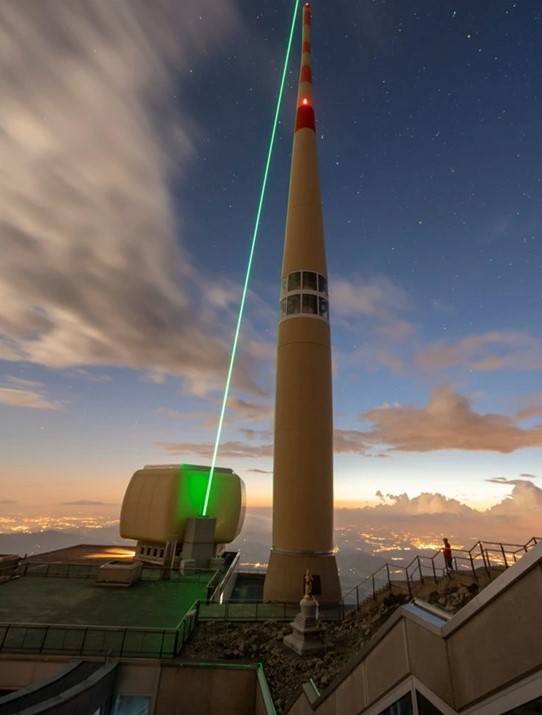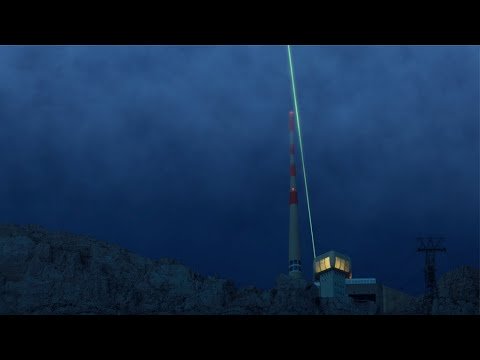Each year, on the French territory alone, lightning strikes more than a million times, causing 20,000 disasters, including more than 15,000 fires, and affecting about a hundred people. 10% of them die immediately, 70% of the survivors keep after-effects for life. Faced with this meteorological phenomenon that is as devastating as it is sudden, the only effective response, developed three centuries ago by Benjamin Franklin, is the lightning rod.
A lightning rod is a metal point installed at the top of the building to be protected and connected to the ground. It provides safety to an area whose radius is equivalent to its height, which is not sufficient for large sites such as rocket launch sites, airports, wind farms or nuclear power plants.
The idea of the Laser Lightning Rod (LLR) is to increase the protection area of lightning rods by taking advantage of laser filamentation, a phenomenon first observed in 1994 by Nobel Prize winner Gérard Mourou, former director of the LOA: high-powered laser beams (of the order of a terawatt, i.e. a few thousand billion watts) delivered in a very short time can propagate in the atmosphere without dispersing. They heat the air on their way, lowering the density of air molecules and creating a kind of channel facilitating the passage of electrons coming from the clouds.
The LLR lightning conductor was installed on the top of the 124m high telecommunication tower in the Swiss Alps. It intercepted the lightning more than 50 meters above the physical lightning conductor, thus multiplying by 2 the surface protected on the ground.
These first significant and very encouraging results allow us to envisage interception at more than 500 meters above traditional lightning conductors.
The European consortium behind this breakthrough includes UNIGE, LOA (Aurélien Houard, Pierre Walch, joint research unit CNRS, ENSTA Paris - Institut Polytechnique de Paris, École polytechnique - Institut Polytechnique de Paris) - in close partnership with EPFL, TRUMPF scientific lasers, ArianeGroup, AMC and the University of Applied Sciences of Vaud.
The detailed results of this study are available on the Nature Photonics website


